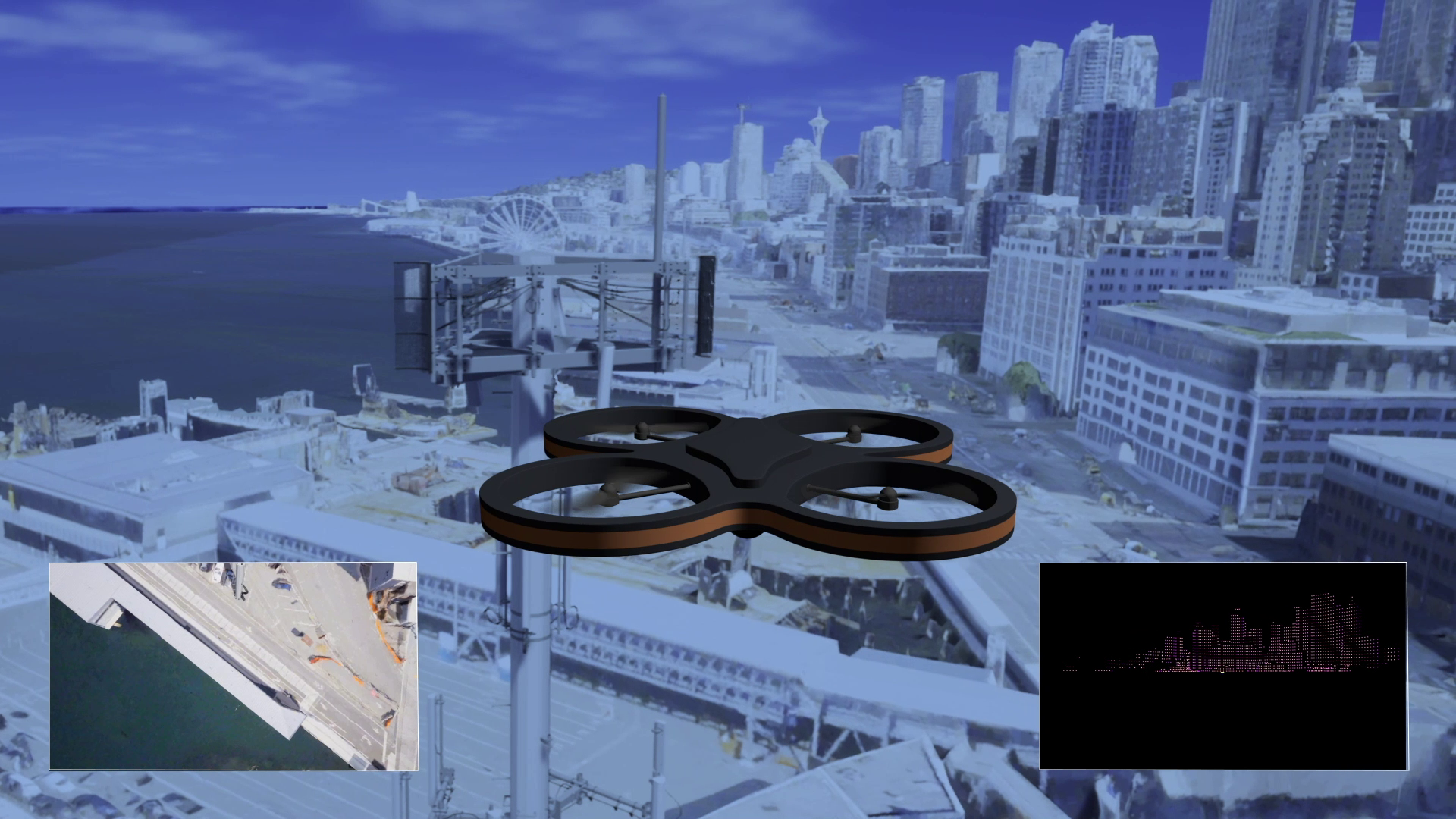Microsoft's new simulator helps train drone AIs
Testing any type of project in the real world is expensive. You have to transport people and equipment, which costs money, and if you break anything, you have to pay for it too! Simulation tends to come first. Making mistakes in a simulation costs a lot less and the lessons learned can then be verified in the real world. If you want to learn how to fly a quadcopter, the best thing to do is spend some time behind the joysticks on a simulator before you even buy anything with physical whirling blades.
Surprisingly, the same goes for the AI. Microsoft has created a simulation product to aid in the development of artificial intelligence systems for drones under the name Project AirSim. It aims to provide a comprehensive environment for testing drone AI systems, making development faster, cheaper and more convenient.
The cheapest way to make mistakesMany companies are developing drones to perform tasks that have historically been done manually by humans. For example, lifting a drone to look at a wind turbine nacelle or insulators on a power line is much safer than having a human climb the structure. However, with a basic drone, this requires a skilled pilot to avoid crashing into expensive gear, especially if conditions get tough. Automation would allow drones to self-manage their tasks at the touch of a button.
 AI models can learn quickly by trial and error in a simulator. Credit: Microsoft
AI models can learn quickly by trial and error in a simulator. Credit: MicrosoftTesting drone AIs on the However, the terrain is difficult, with many risks involved. Let's say you're building an AI-controlled drone to inspect power lines. If the drone's navigation algorithm isn't quite right, you can watch it navigate over the ocean, never coming back. Meanwhile, if you haven't quite managed to avoid the objects, he might run right into the power lines he's supposed to be inspecting. The consequences are still worse if it happens to cut off the power to the local area in the process.
Simulation provides a way to test drone AIs under various conditions without risk to life, limbs and property. Drone behavior can be quickly put through a sanity check, and silly mistakes can be easily spotted. If the drone crashes in the simulator, just hit reset, make some changes, and start over. In real life, you first have to pick up the pieces and rebuild the drone, after apologizing to the owner for what it just touched.
Microsoft's offerProject AirSim is Microsoft's new simulation offering for drone development. It allows to test and develop drone AI in a realistic 3D world. Conditions such as wind, rain and snow can all be simulated, as well as different environments, from cityscapes to thick forests.
Included are recreations of locations like New York and London, as well as more generic offerings such as a virtual airport. Bing Maps data will also be available to create detailed 3D environments of other locations around the world.
Having such an environment to test is invaluable for developing not only AI to control drones, but also sensors...

Testing any type of project in the real world is expensive. You have to transport people and equipment, which costs money, and if you break anything, you have to pay for it too! Simulation tends to come first. Making mistakes in a simulation costs a lot less and the lessons learned can then be verified in the real world. If you want to learn how to fly a quadcopter, the best thing to do is spend some time behind the joysticks on a simulator before you even buy anything with physical whirling blades.
Surprisingly, the same goes for the AI. Microsoft has created a simulation product to aid in the development of artificial intelligence systems for drones under the name Project AirSim. It aims to provide a comprehensive environment for testing drone AI systems, making development faster, cheaper and more convenient.
The cheapest way to make mistakesMany companies are developing drones to perform tasks that have historically been done manually by humans. For example, lifting a drone to look at a wind turbine nacelle or insulators on a power line is much safer than having a human climb the structure. However, with a basic drone, this requires a skilled pilot to avoid crashing into expensive gear, especially if conditions get tough. Automation would allow drones to self-manage their tasks at the touch of a button.
 AI models can learn quickly by trial and error in a simulator. Credit: Microsoft
AI models can learn quickly by trial and error in a simulator. Credit: MicrosoftTesting drone AIs on the However, the terrain is difficult, with many risks involved. Let's say you're building an AI-controlled drone to inspect power lines. If the drone's navigation algorithm isn't quite right, you can watch it navigate over the ocean, never coming back. Meanwhile, if you haven't quite managed to avoid the objects, he might run right into the power lines he's supposed to be inspecting. The consequences are still worse if it happens to cut off the power to the local area in the process.
Simulation provides a way to test drone AIs under various conditions without risk to life, limbs and property. Drone behavior can be quickly put through a sanity check, and silly mistakes can be easily spotted. If the drone crashes in the simulator, just hit reset, make some changes, and start over. In real life, you first have to pick up the pieces and rebuild the drone, after apologizing to the owner for what it just touched.
Microsoft's offerProject AirSim is Microsoft's new simulation offering for drone development. It allows to test and develop drone AI in a realistic 3D world. Conditions such as wind, rain and snow can all be simulated, as well as different environments, from cityscapes to thick forests.
Included are recreations of locations like New York and London, as well as more generic offerings such as a virtual airport. Bing Maps data will also be available to create detailed 3D environments of other locations around the world.
Having such an environment to test is invaluable for developing not only AI to control drones, but also sensors...
What's Your Reaction?






















